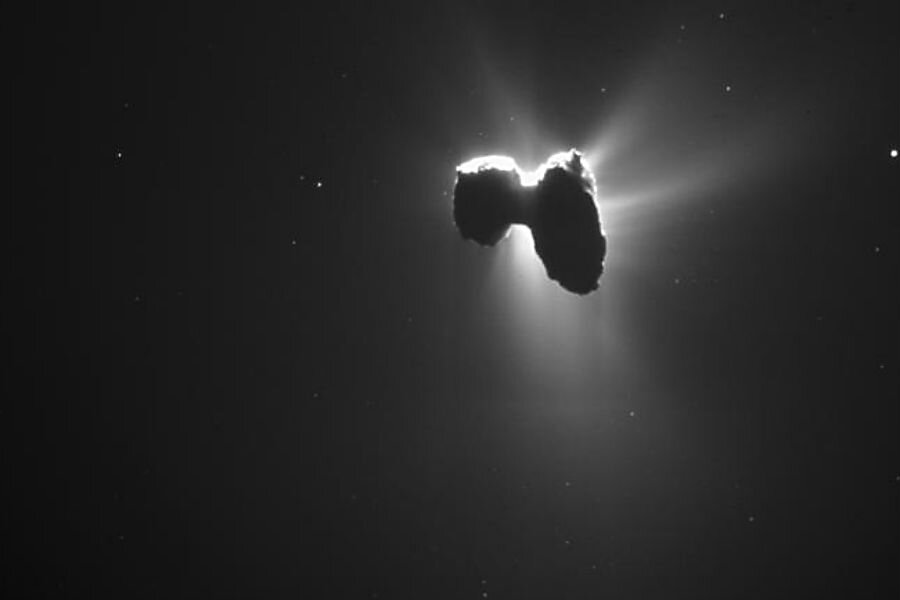Awesome photo of Comet 67P: Lessons from the Rosetta mission
Loading...
The Rosetta mission continues even after scientists bid a farewell to comet lander Philae in February, with hopes of gathering more information about Comet 67P/Churyumov-Gerasimenko.
The European Space Agency (ESA) has released a new image from the Rosetta mission, showing Comet 67P/ like it has never been seen before. In a perfect alignment of the sun, the comet, and the spaceship, scientists acquired backlit dazzling image of the comet through the Rosetta's navigation camera system, from 200 miles away on March 27.
The new image of the comet – which is made up of a large and smaller bodies that may have once collided and fused together some billion years ago – shows the large body on the right of the picture, and the smaller segment to the left.
The Rosetta spacecraft has been orbiting the comet since 2014. In February, scientists moved the spacecraft close to the comet to study it in details, but later moved it further away to enable them study the region around the nucleus.
“Today, Rosetta is moving back below 600 km from the nucleus, having been at 1000 km on 30 March," ESA officials wrote on a news blog for the comet mission."The spacecraft will come back to about 200 km early next week and carry out a zero phase flyby on 9 April at around 30 km altitude.”
Since its launch in 2004, the spacecraft has gathered fresh insights about the comet and our planetary system. Scientists have long been intrigued with Comet 67P/Churyumov Gerasimenko, as it contains the molecules that were around the time that the solar system was formed. As The Christian Science Monitor’s Pete Spotts wrote last year:
Comets in particular are thought to carry some of the most pristine ingredients the young sun and its extended disk of dust and gas had to offer as raw material for planets. Comets also are known to carry organic compounds and are thought to be one type of vehicle that delivered water and organic chemicals to Earth – chemicals that could serve as building blocks for more-complex molecules underpinning organic life.
In January, the spacecraft confirmed the presence of ice on the surface of the comet. Though ice is the primary component that makes up comets, finding it on the surface is rare, and the confirmation provided a new understanding about how the icy space object formed and evolved, the Monitor reported.
Last October, the spacecraft detected molecular oxygen from Comet 67P/Churyumov-Gerasimenko, contradicting the current solar system model suggesting that molecular oxygen should have disappeared by the time 67P was created.
Though Rosetta will continue to orbit the comet, its mission will increasingly become more difficult as both the comet and probe move out towards the orbit of Jupiter, as the BBC reported. Scientists expect the probe to crash into the icy ball in September 2016, but they hope to gather more data – and possibly more spectacular images – before then.








